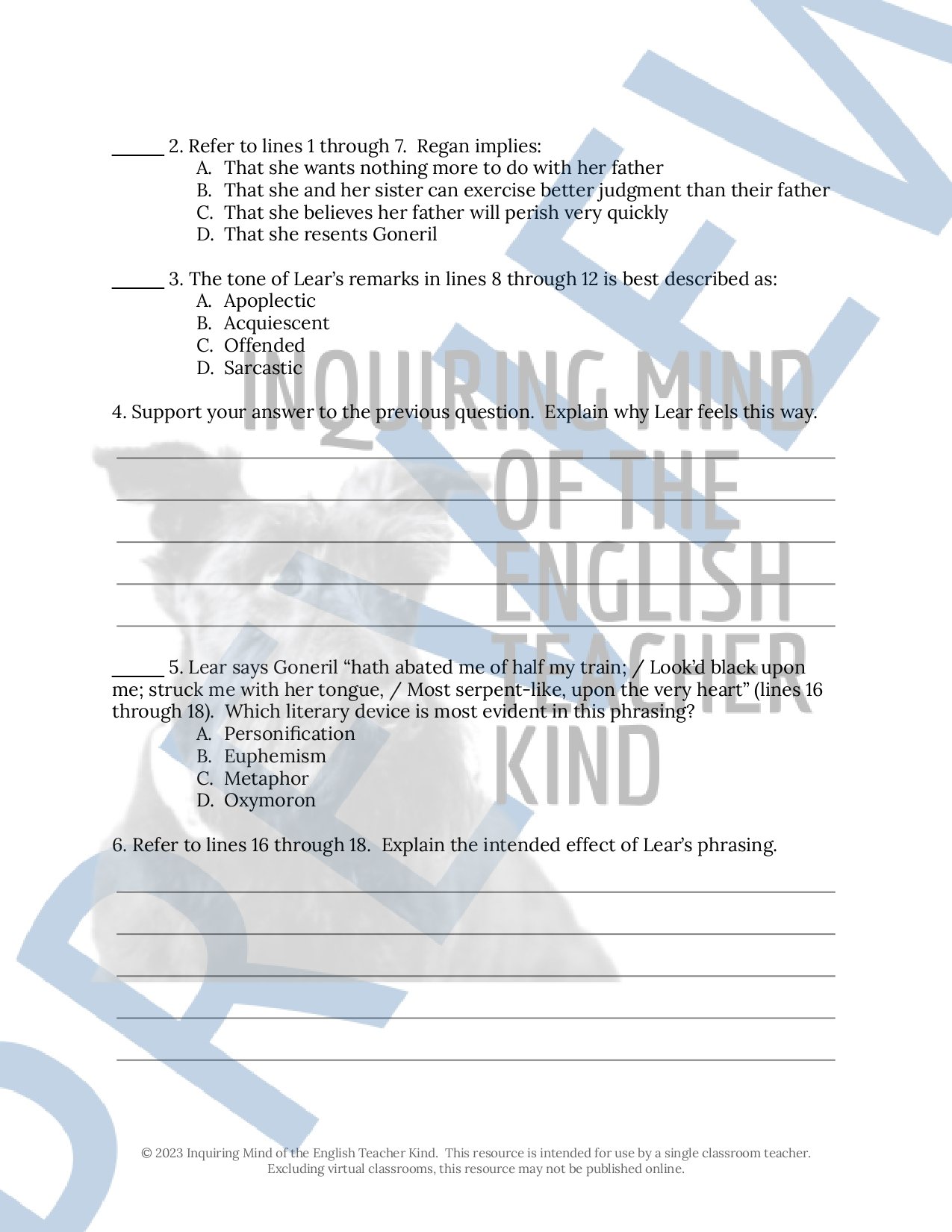 Image 1 of 41
Image 1 of 41

 Image 2 of 41
Image 2 of 41

 Image 3 of 41
Image 3 of 41

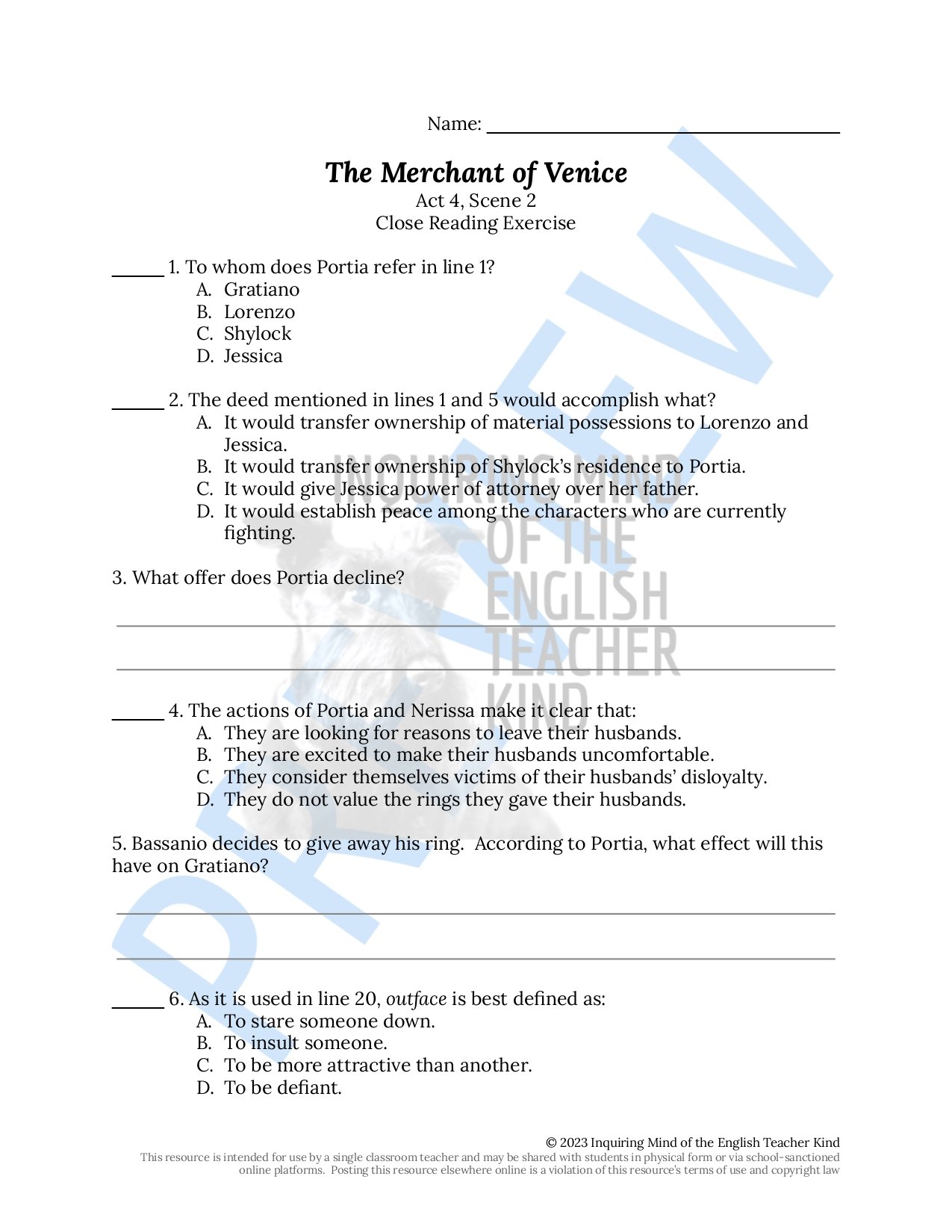 Image 4 of 41
Image 4 of 41

 Image 5 of 41
Image 5 of 41

 Image 6 of 41
Image 6 of 41

 Image 7 of 41
Image 7 of 41

 Image 8 of 41
Image 8 of 41

 Image 9 of 41
Image 9 of 41

 Image 10 of 41
Image 10 of 41

 Image 11 of 41
Image 11 of 41

 Image 12 of 41
Image 12 of 41

 Image 13 of 41
Image 13 of 41

 Image 14 of 41
Image 14 of 41

 Image 15 of 41
Image 15 of 41

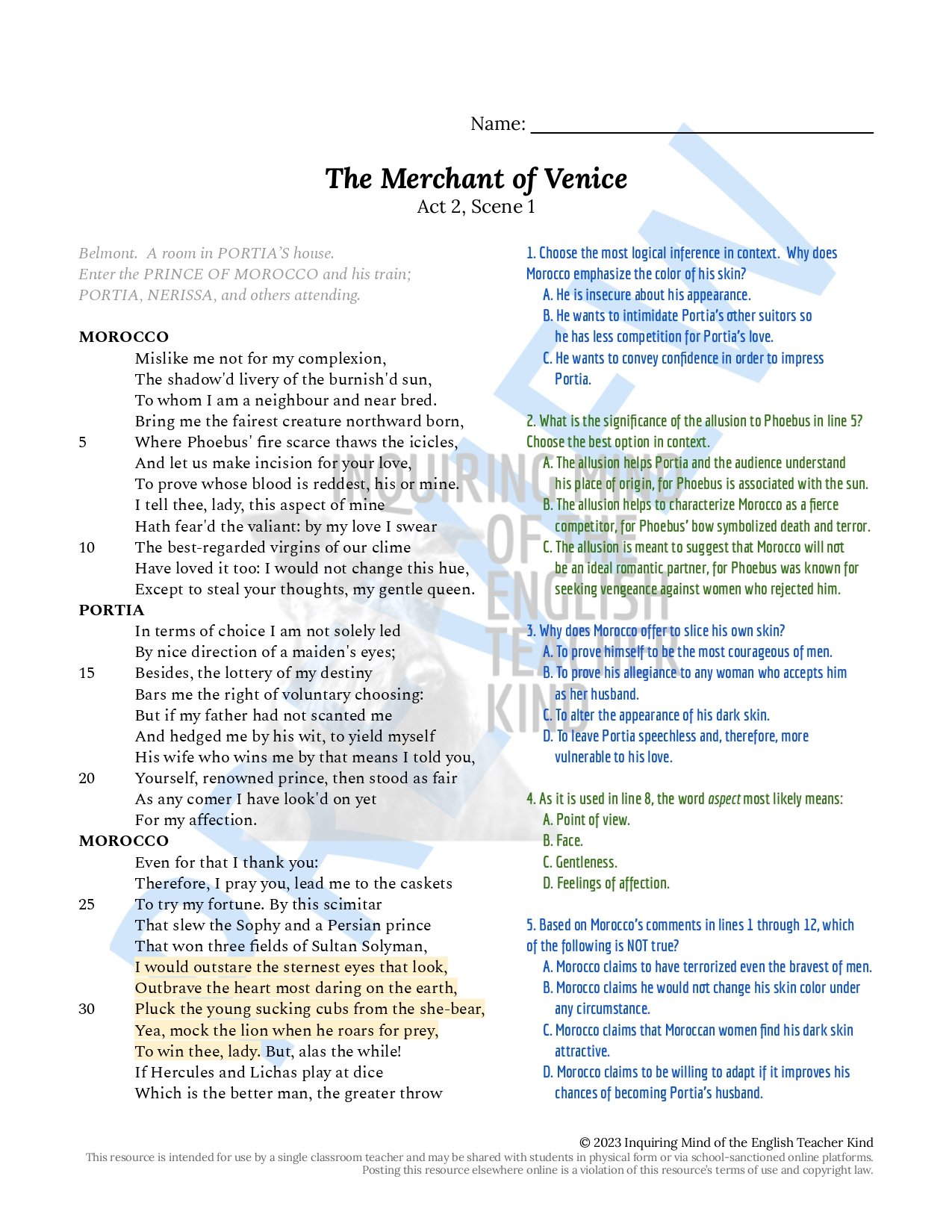 Image 16 of 41
Image 16 of 41

 Image 17 of 41
Image 17 of 41

 Image 18 of 41
Image 18 of 41

 Image 19 of 41
Image 19 of 41

 Image 20 of 41
Image 20 of 41

 Image 21 of 41
Image 21 of 41

 Image 22 of 41
Image 22 of 41

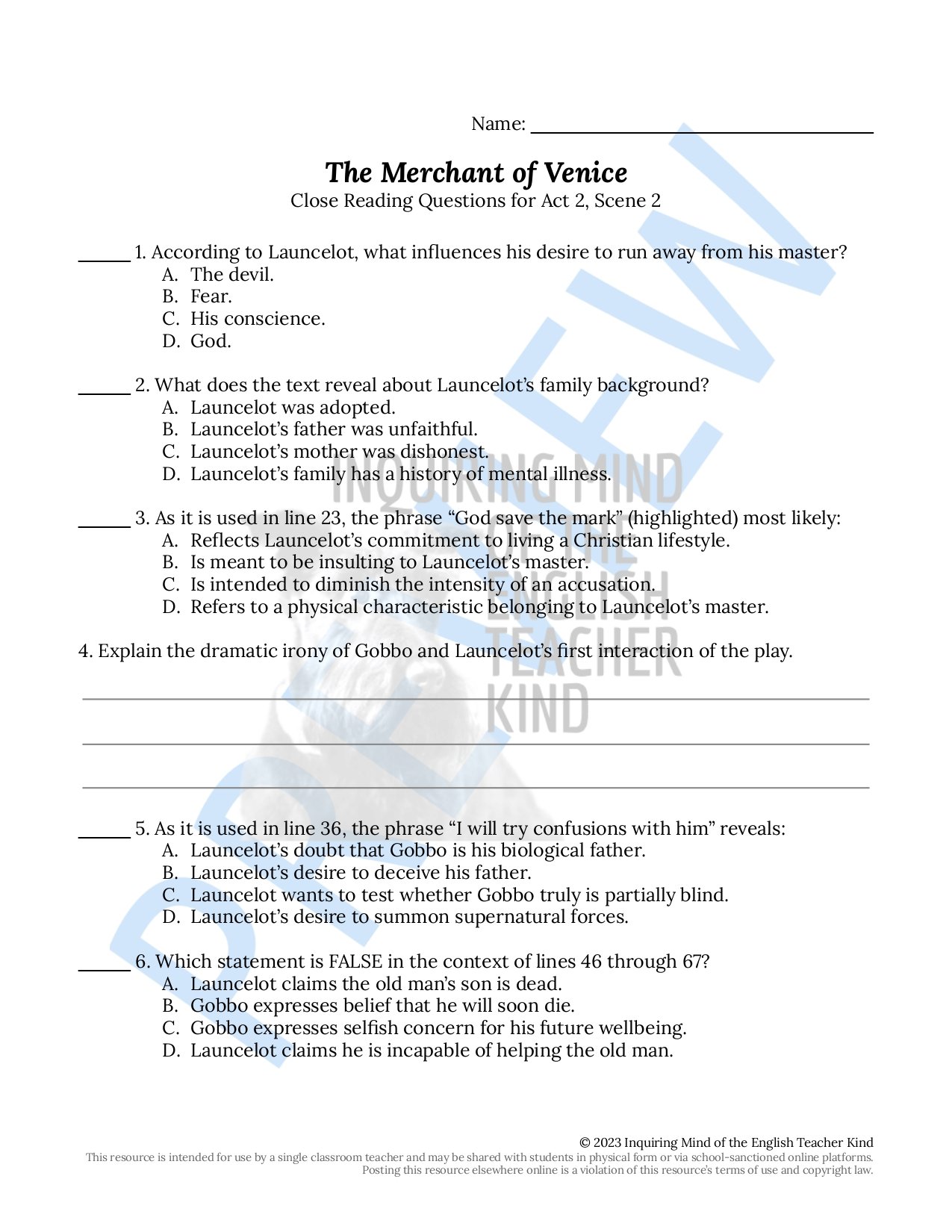 Image 23 of 41
Image 23 of 41

 Image 24 of 41
Image 24 of 41

 Image 25 of 41
Image 25 of 41

 Image 26 of 41
Image 26 of 41

 Image 27 of 41
Image 27 of 41

 Image 28 of 41
Image 28 of 41

 Image 29 of 41
Image 29 of 41

 Image 30 of 41
Image 30 of 41

 Image 31 of 41
Image 31 of 41

 Image 32 of 41
Image 32 of 41

 Image 33 of 41
Image 33 of 41

 Image 34 of 41
Image 34 of 41

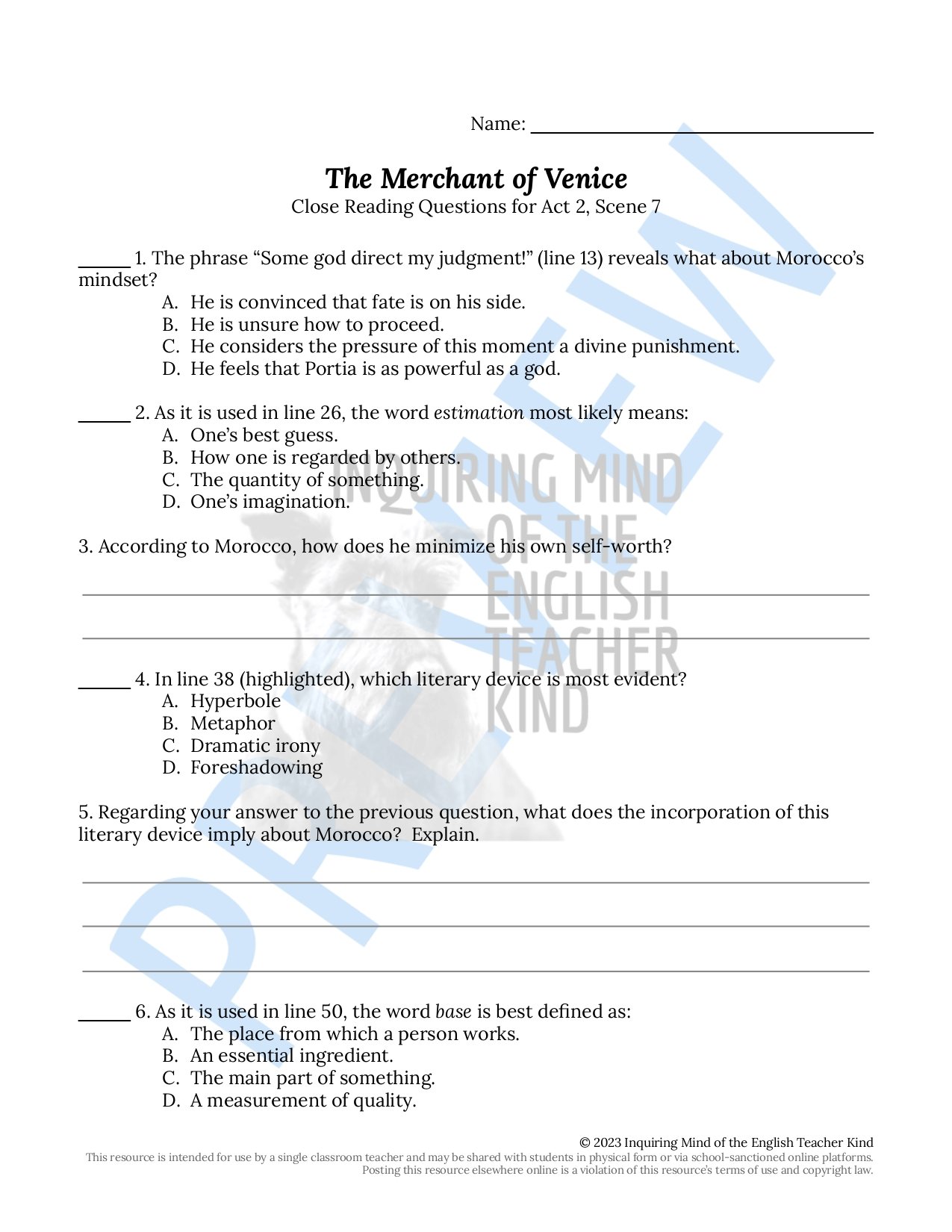 Image 35 of 41
Image 35 of 41

 Image 36 of 41
Image 36 of 41

 Image 37 of 41
Image 37 of 41

 Image 38 of 41
Image 38 of 41

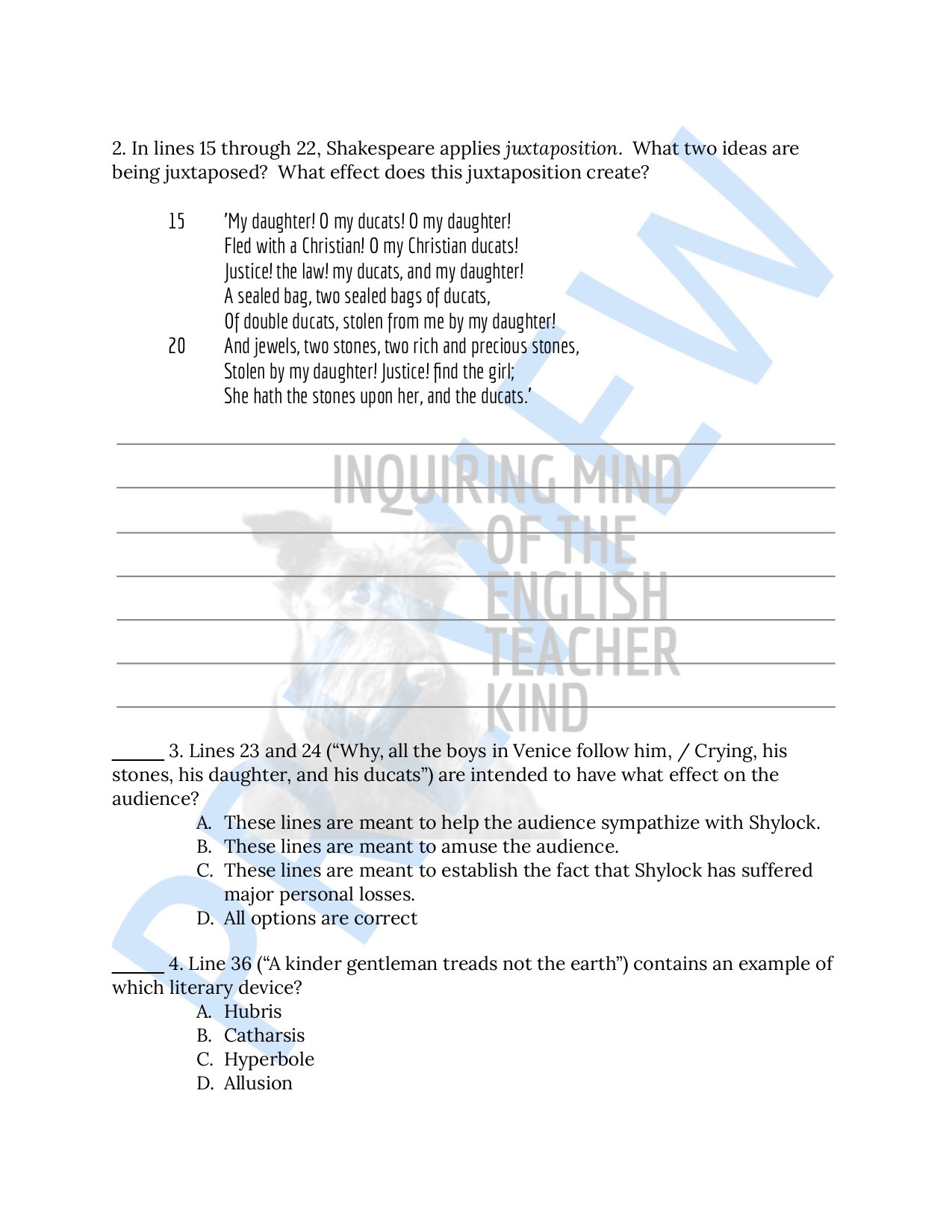 Image 39 of 41
Image 39 of 41

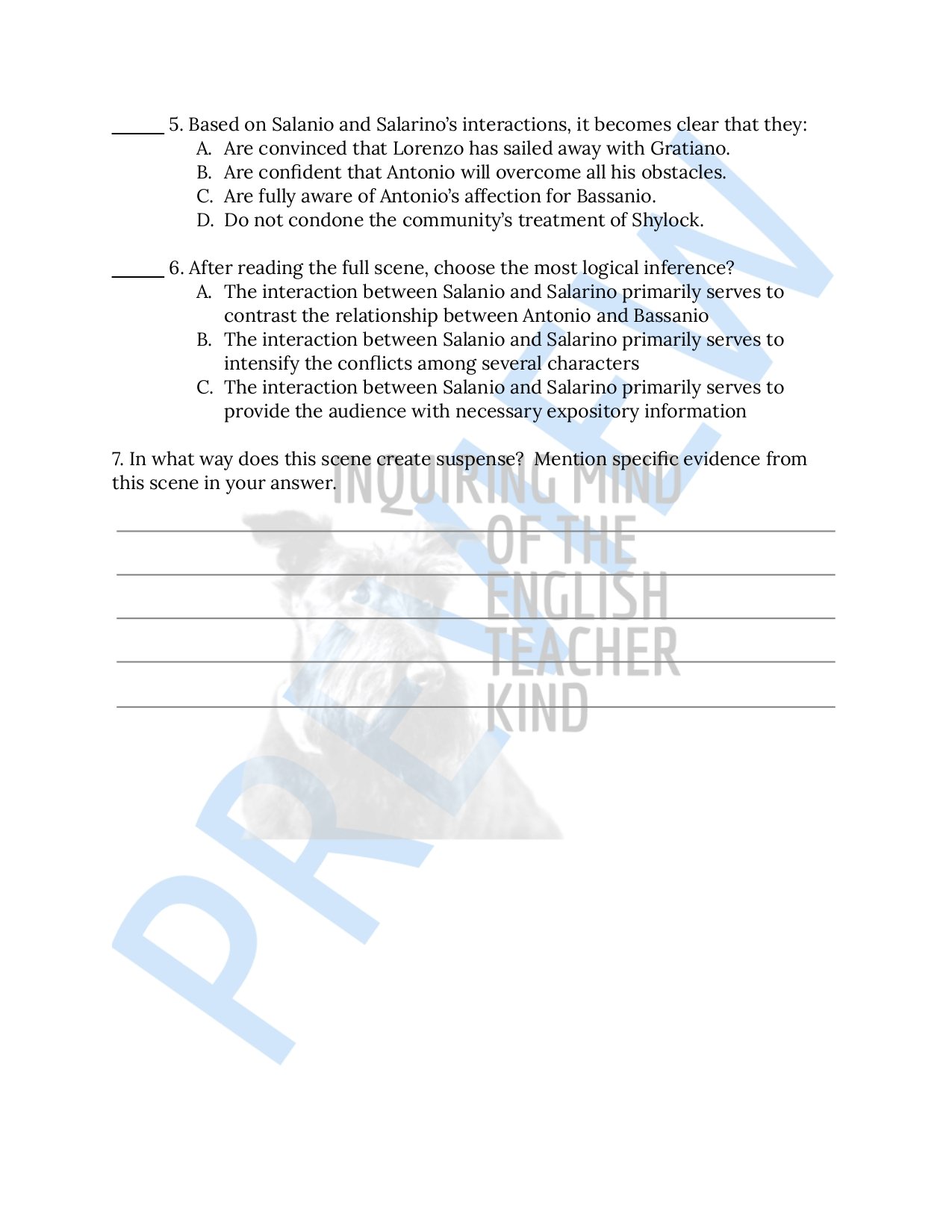 Image 40 of 41
Image 40 of 41

 Image 41 of 41
Image 41 of 41










































The Merchant of Venice Close Reading Analysis Worksheets Bundle
Help high school students go beyond basic reading comprehension and support the development of critical thinking and craft analysis skills with this bundle of close reading activities covering each scene of William Shakespeare's The Merchant of Venice. Answer keys are included. Materials are delivered in editable Word Document and printable PDF formats. (Alternatively, a Google Drive bundle option is available.) By engaging with these materials, students will:
Identify what the text states explicitly as well as implicitly
Consult reference materials in order to learn and verify word meanings
Discern the intended effects of the author's word choices and narrative techniques
Determine the functions of given excerpts
Describe tone in context
Explore how complex characters think, behave, interact, and develop
Consider the motif of the guest-host relationship and argue whether Portia conforms to the expectations of a good host, or whether she fails to meet expectations and represents a bad host
Compare and contrast characters (Antonio and Shylock; Portia and Antonio; Jessica and Portia)
Apply knowledge of many literary devices with emphasis on metaphor, oxymoron, onomatopoeia, allusion, personification, symbolism, invective, euphemism, juxtaposition, hyperbole situational irony, and dramatic irony
Conduct brief online research (if necessary) to determine the symbolic value of a particular object
Support claims and inferences with sound reasoning and relevant evidence
Write about Shakespearean drama with clarity, accuracy, and precision
Come to class better prepared to discuss dramatic works
This resource may facilitate small-group discussions in which students decode language and pose/respond to questions relating to plot, broad topics, and character development. Using this resource for structured guidance, students will improve their ability to present information, conclusions, and supporting textual evidence clearly and convincingly.
Materials are available for teaching a variety of Shakespeare's plays:
Help high school students go beyond basic reading comprehension and support the development of critical thinking and craft analysis skills with this bundle of close reading activities covering each scene of William Shakespeare's The Merchant of Venice. Answer keys are included. Materials are delivered in editable Word Document and printable PDF formats. (Alternatively, a Google Drive bundle option is available.) By engaging with these materials, students will:
Identify what the text states explicitly as well as implicitly
Consult reference materials in order to learn and verify word meanings
Discern the intended effects of the author's word choices and narrative techniques
Determine the functions of given excerpts
Describe tone in context
Explore how complex characters think, behave, interact, and develop
Consider the motif of the guest-host relationship and argue whether Portia conforms to the expectations of a good host, or whether she fails to meet expectations and represents a bad host
Compare and contrast characters (Antonio and Shylock; Portia and Antonio; Jessica and Portia)
Apply knowledge of many literary devices with emphasis on metaphor, oxymoron, onomatopoeia, allusion, personification, symbolism, invective, euphemism, juxtaposition, hyperbole situational irony, and dramatic irony
Conduct brief online research (if necessary) to determine the symbolic value of a particular object
Support claims and inferences with sound reasoning and relevant evidence
Write about Shakespearean drama with clarity, accuracy, and precision
Come to class better prepared to discuss dramatic works
This resource may facilitate small-group discussions in which students decode language and pose/respond to questions relating to plot, broad topics, and character development. Using this resource for structured guidance, students will improve their ability to present information, conclusions, and supporting textual evidence clearly and convincingly.
Materials are available for teaching a variety of Shakespeare's plays:
Preview this resource.
Use this bundle of rigorous close reading resources to help high school students extend reading comprehension and analyze plot developments over the course of William Shakespeare's The Merchant of Venice. Answer keys are included. Covering every single scene in the play, this bundle offers 20 editable worksheets.





































































